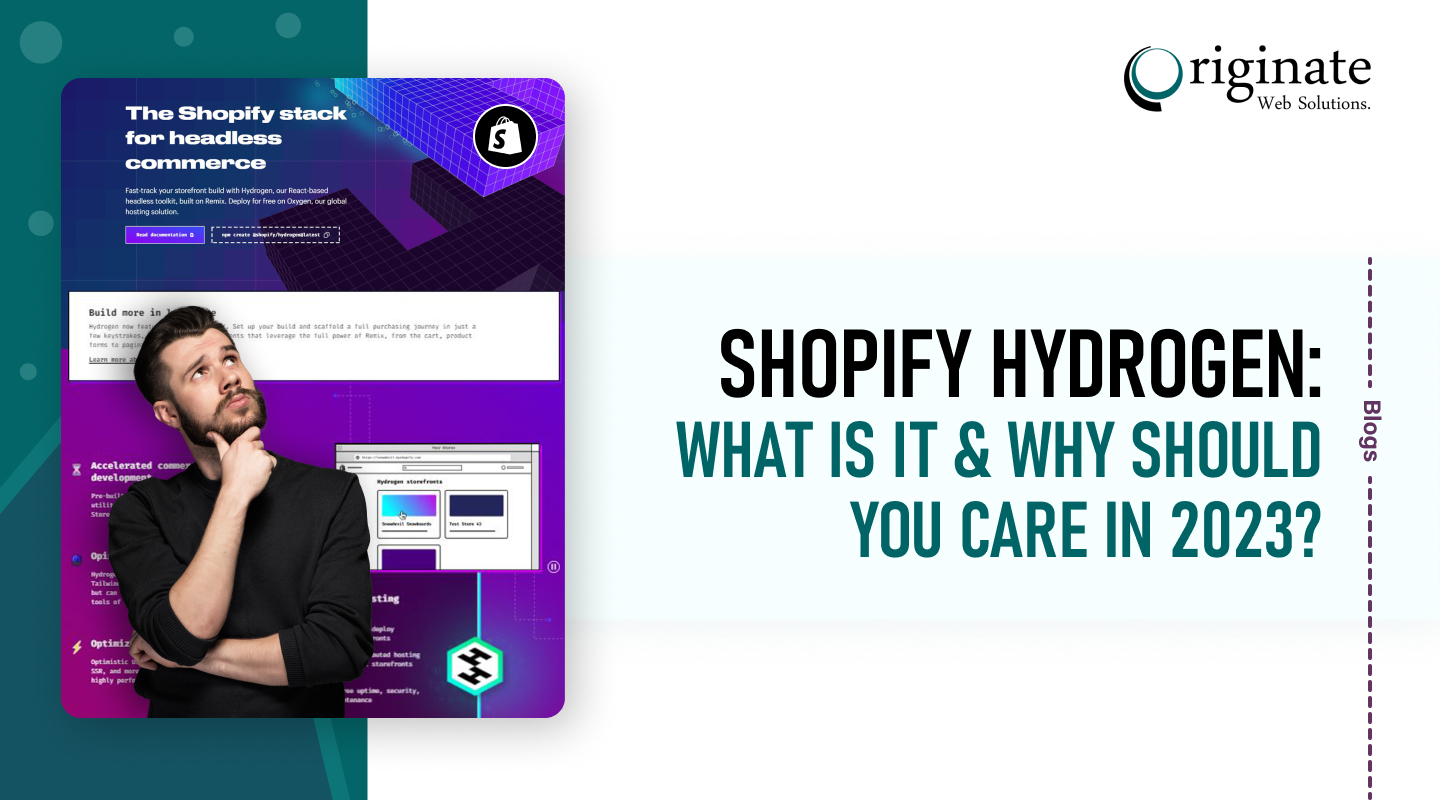Shopify has considerably evolved since it first launched as an ecommerce platform back in 2006 to become an omnichannel solution, hosting over 1 million merchants on its platform to sell online.
It regularly launches new functionalities for store owners to help scale their businesses. Shopify Hydrogen is one such ambitious project from Shopify that could change the ecommerce industry dramatically.
Here is everything you need to know about Shopify Hydrogen and why it matters.
What is Shopify Hydrogen?
Hydrogen is a front-end web development framework for creating tailor-made Shopify storefronts. It contains the structure, components, and tools you need to get started so you can spend time styling and building features that distinguish your business.
How Does Shopify Hydrogen Operate?
Hydrogen Shopify is a development framework that allows developers to build custom storefronts using modern web technologies like React, GraphQL, and TypeScript. It provides tools and libraries that simplify creating and customizing Shopify storefronts.
Here’s how Shopify Hydrogen theme operates:
1. Development Environment:
Developers set up their local development environment with the required tools and dependencies. They use a code editor, version control system, and package manager to work on their storefront project.
2. Hydrogen CLI:
Developers use the Hydrogen CLI (Command Line Interface) to create a new Shopify Hydrogen project. The CLI sets up the project structure, installs the necessary dependencies, and provides commands for development and deployment.
3. React Components:
Shopify Hydrogen uses React, a popular JavaScript library for building user interfaces. Developers create reusable React components to handle different parts of the storefront, such as product listings, cart functionality, or checkout process.
4. GraphQL API:
Shopify Hydrogen makes data retrieval from the backend simple with its GraphQL API. All it takes to access all the information your store requires – from product details and customer information to storefront requirements – is creating queries using this powerful technology and retrieving what is necessary. It provides an efficient and effortless method to gather the necessary details for your storefront.
5. Styling:
Hydrogen framework Shopify provides a styling system that allows developers to customize the storefront’s appearance. They can use CSS or CSS-in-JS libraries like Emotion or Styled Components to style the React components.
6. TypeScript Support:
Shopify-Hydrogen supports TypeScript, a typed superset of JavaScript. Developers can use TypeScript to add static typing to their code, catching errors early and improving code quality.
7. Development Workflow:
Developers use the Hydrogen CLI to start a local development server that compiles the React components, handles the GraphQL requests, and provides a live preview of the storefront. They can make changes, see them reflected in real time, and debug any issues during development.
8. Deployment:
Once the development is complete, developers use the Hydrogen CLI to build a production-ready storefront version. They can then deploy it to a hosting platform like Shopify’s hosting service or any other hosting provider.
What are the Pros and cons of going headless with Shopify-Hydrogen?
Pros of Shopify Hydrogen
1. React JS
With React.js, Shopify offers dynamic, quick, and personalized commerce. If Shopify invests in React, it will make a significant message to the industry. It validates Shopify Hydrogen React.js as an essential tool in ecommerce.
2. You get a starter kit
Those who begin with Hydrogen receive starter templates and a bare-bones sample store right out of the box. You can see what the starting kit includes here (buttons, toggles, and navigation). While you must develop pieces yourself, having pre-built components is a huge help.
3. Some Pre-built App Connections Available
While stores cannot carry many of their favorite Shopify applications with them, a few apps are now integrated with Hydrogen. This includes CMS systems like Sanity and Contentful, as well as popular applications like Klaviyo, Gorgias, Recharge, Nosto, and others.
Disadvantages of Hydrogen Shopify
1. Uses React Server Components
Hydrogen’s output isn’t a static progressive web app (PWA). So, your developers will need to develop for the Shopify server.
As a sidebar, React Server Components are trendy and new (consider it “in beta”). While it’s an excellent idea, most developers haven’t yet fully adopted it.
In Conclusion
As e-commerce continues to evolve in 2023 and beyond, Shopify Hydrogen is a fantastic framework that deserves your attention. Its innovative approach to front-end development is reshaping the way digital stores are created.
By embracing new technologies like these, you are more likely to position your venture for sustained success. Moreover, well-established Shopify partners like Originate Web make it easier to pave the way for success!
Our Shopify website development services are industry-leading, helping ecommerce entrepreneurs to scare their businesses.
Keen to grow big? Connect with us!

